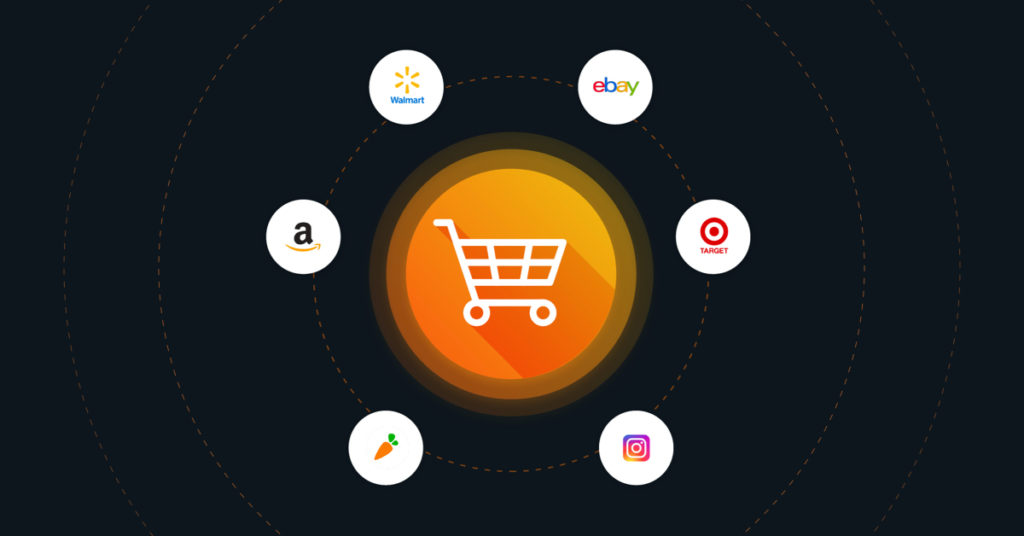
The state of ecommerce today has brought more channels than ever before for consumers to buy products and brands to sell. Between Amazon, Walmart, Target, eBay, and many more, the opportunity for explosive growth through multichannel sales is immense. Many brands today are leveraging a multi-channel approach in their e-commerce growth strategy. This is due to significant changes in costs, competition and consumer behavior.
Why It’s Not Just Amazon Anymore
Amazon is known for its fast shipping, competitive pricing, and customer-first strategy. So, why are brands adding more channels to their strategy?
“Multichannel advertising diversifies revenue, risk, and audiences. This generates additional income streams, protects your business, and expands more quickly than if you build on one channel at a time.
Ultimately, diversity makes your brand more competitive and sets your business up for success.”
Read more about the benefits of multichannel advertising in our free ebook here.
To summarize – multi-channel expansion is all about diversifying risk and increasing revenue potential.
Market-share of The Major Platforms
Amazon is the clear leader of ecommerce marketplaces. But ever since we saw the spike in online sales at the beginning of 2020, other channels have been rushing to catch up. As of 2021, eBay has taken the lead as the second-largest ecommerce marketplace. eBay currently has over 182 billion active users worldwide.
Walmart and Target follow, as do various social selling platforms that have emerged recently.
Interested in learning more about which marketplace is right for you? Check out our upcoming event, Marketplace Madness, on April 20th & 21st.
Strategy for Expanding Your Multichannel Ecommerce Approach
As more marketplaces establish themselves in the ecosystem, many sellers are asking themselves, “what platform do I expand to next?”
It is important to note that the strategy that works for Amazon may not work for eBay, Walmart or other marketplaces. The multi-channel ecommerce platforms are not built in a way that allows a copy and paste strategy. This means sellers and brands are going to have to put in more effort upfront with different strategies and understanding the different fees and processes. This does not mean managing your different marketplaces in a silo, it is important that these still be cohesive for budget, sales goals, and inventory purposes.
The Importance of Advertising on Marketplaces
However, all marketplaces have one thing in common, they require advertising to be successful on the platform. We suggest looking at holistic metrics to start to get a better understanding of which platforms have the greatest impact on your business. When you are advertising on different marketplaces there are a few metrics to keep in mind:
Gross Profit – Your gross profit is your total sales minus, COGS (cost of goods sold), selling fees, and ad spend.
Gross Margins – The best way to calculate your gross margins is to divide your gross profit by your total sales.
TACOS – Also known as Total Advertising Cost of Sale, TACOS is calculated by dividing your ad spend by your total sales. This metric allows you to have better insight into the long-term growth of your business.
To learn more about what metrics to track for different marketplaces, download our free ebook on multichannel advertising.
Pros and Cons of Expanding to a New Marketplace
There are a lot of pros for expanding your business to a new marketplace, hence the demand for new marketplaces in recent years. Here are just a few of the pros:
- Less competition
- New potential customers
- Expand your brand image
But there are also cons to moving to a new marketplace, let’s discuss some of those. Depending on which marketplace you choose, it may be difficult to break into that platform and get your products listed. As mentioned earlier, a new marketplace means a whole new strategy. This may be hard to solidify not to mention time-consuming.
To learn more about the pros and cons of expanding your multi-channel strategy, download our free ebook on multi-channel advertising.
Marketplace Madness
Still not sure which marketplace to expand into next? Which is growing the fastest? How should brands properly manage multichannel inventory and ads? Most importantly – is it worth the effort and money to expand?
Marketplace Madness is here to combine the power of extensive data, insights & expertise with the strategy of brands that have successfully conquered multi-channel ecommerce expansion. All to give you the necessary knowledge and strategy it takes to succeed on multiple marketplaces.
Click Marketplace Madness to get your FREE ticket to our exclusive two-day virtual event that will give you the strategies and tactics used by billion-dollar companies as well as the playbook to build a connected multi-channel approach.





